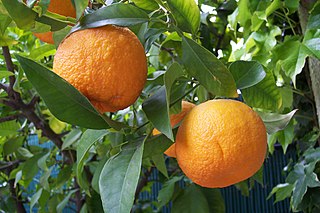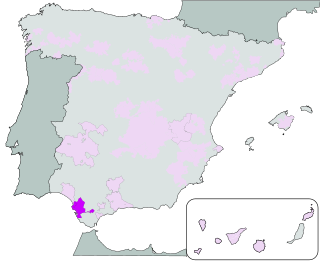
Sherry is a fortified wine made from white grapes that are grown near the city of Jerez de la Frontera in Andalusia, Spain. Sherry is produced in a variety of styles made primarily from the Palomino grape, ranging from light versions similar to white table wines, such as Manzanilla and Fino, to darker and heavier versions that have been allowed to oxidise as they age in barrel, such as Amontillado and Oloroso. Sweet dessert wines are also made from Pedro Ximenez or Moscatel grapes, and are sometimes blended with Palomino-based Sherries.
The denominación de origen is part of a regulatory classification system used primarily for Spanish wines but also for other foodstuffs such as cheeses, condiments, honey, and meats, among others. In wines, it parallels the hierarchical systems of France (1935) and Italy (1963), although Rioja (1925) and Jerez (1933) preceded the full system. In foods, it performs a similar role, namely regulation of quality and geographical origin among Spain's finest producers. There are five other designated categories solely for wine and a further three specifically covering food and condiments, all recognised by the European Union (EU). In Catalonia, two further categories – labelled A and Q – cover traditional Catalan artisan food products, but were not recognised by the EU as of 2007. In recent decades, the concept of the denominación de origen has been adopted by other countries, primarily in Latin America.
Naranja is a Spanish word meaning 'orange' and can refer to:
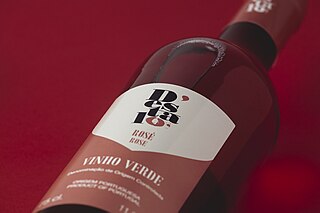
A rosé is a type of wine that incorporates some of the color from the grape skins, but not enough to qualify it as a red wine. It may be the oldest known type of wine, as it is the most straightforward to make with the skin contact method. The pink color can range from a pale "onion-skin" orange to a vivid near-purple, depending on the varietals used and winemaking techniques. There are three major ways to produce rosé wine: skin contact, saignée, and blending. Rosé wines can be made still, semi-sparkling or sparkling and with a wide range of sweetness levels from highly dry Provençal rosé to sweet White Zinfandels and blushes. Rosé wines are made from a wide variety of grapes and can be found all around the globe.

Aguardiente is a generic term for alcoholic beverages that contain between 29% and 60% alcohol by volume (ABV). The word is a compound of the Romance languages' words for "water" and "burning(/fiery)", similarly to the English term "firewater". Both aguardiente and brandy—from the Dutch expression for "burnt wine"—originated as terms for distilled spirits using whatever ingredients were available locally.

Malaga is a sweet fortified wine originating in the Spanish city of Málaga made from Pedro Ximénez and Moscatel grapes. The center of Malaga production is Sierra de Almijara, along with Antequera, Archidona, San Pedro Alcantara, Velez Malaga and Competa. The winemaking history in Malaga and the nearby mountains is one of the oldest in Europe. However, like many of the world’s great dessert wines, demand fell dramatically in the 20th century and it was feared that this wine would soon become extinct. There has been a recent surge in interest in sweet wines, and Malaga wines are finding their place on the world stage. The main wine villages of this appellation include Frigiliana and Vélez. There are many red and white varietals grown, but the only ones used for dessert wines are the Pedro Ximénez and Moscatel.
Andalusian cuisine is the cuisine of Andalusia, Spain. Notable dishes include gazpacho, fried fish, the jamones of Jabugo, Valle de los Pedroches and Trevélez, and the wines of Jerez, particularly sherry.
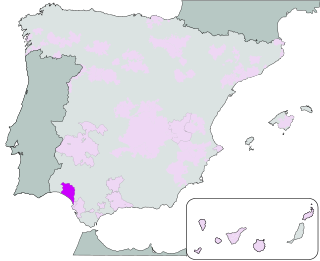
Condado de Huelva is a Spanish Denominación de Origen (DO) for wines located in the south-east of the province of Huelva. The wines known as the Wines of the Discovery of America are produced there.

Montilla-Moriles is a Spanish Denominación de Origen (DO) for wines located in the southern part of the province of Córdoba. It is bounded by the river Genil to the east, by the river Guadajoz to the west, by the river Guadalquivir to the north, and by the Subbetic Range of mountains to the south.

Málaga and Sierras de Málaga are two different Spanish Denominaciones de Origen (DO) for wines in the province of Málaga.
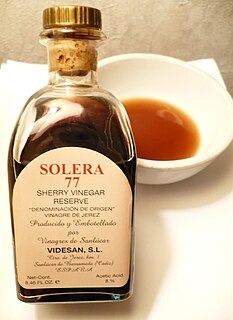
Sherry vinegar is a gourmet wine vinegar made from Sherry. It is produced in the Spanish province of Cádiz and inside the triangular area between the city of Jerez de la Frontera and towns of Sanlúcar de Barrameda and El Puerto de Santa María, known as the "sherry triangle".

Cariñena is a Spanish Denominación de Origen (DO) for wines located in Cariñena in the province of Zaragoza. It is one of the oldest protected growing areas in Europe, the DO having been created in 1932. Cariñena vineyards are located near the centre of Aragón, about 50 km southwest of Zaragoza, on a plateau known as the Campo de Cariñena. The lower vineyards lie at an altitude of 400 m, rising to 800 m as they approach the Sierra de la Virgen mountains. To the west they border on the Calatayud (DO).
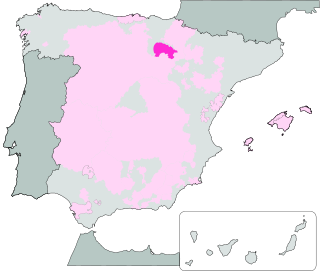
Valles de Sadacia is a Spanish geographical indication for Vino de la Tierra wines located in the autonomous region of La Rioja. Vino de la Tierra is one step below the mainstream Denominación de Origen indication on the Spanish wine quality ladder.

Villaviciosa de Córdoba is a Spanish geographical indication for Vino de la Tierra wines located in the municipalities of Villaviciosa de Córdoba and Espiel, in the province of Córdoba, Andalusia, Spain, which acquired its legal status in 2008.

Valdejalón is a Spanish geographical indication for Vino de la Tierra wines located in the wine-producing area of Valdejalón, in the province of Zaragoza, in the autonomous region of Aragon, Spain. Vino de la Tierra is one step below the mainstream Denominación de Origen indication on the Spanish wine quality ladder.

Valle del Cinca is a Spanish geographical indication for Vino de la Tierra wines located in the wine-producing area of the Cinca Valley, in the province of Huesca, in the autonomous region of Aragon, Spain. Vino de la Tierra is one step below the mainstream Denominación de Origen indication on the Spanish wine quality ladder.
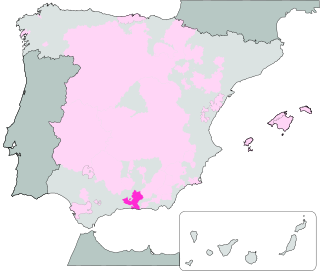
Granada Sur-Oeste is a Spanish geographical indication for Vino de la Tierra wines located in the autonomous region of Andalusia. Vino de la Tierra is one step below the mainstream Denominación de Origen indication on the Spanish wine quality ladder.

Sierra Norte de Sevilla is a Spanish geographical indication for Vino de la Tierra wines located in the Sierra Norte de Sevilla range of the Sierra Morena, Andalusia, southern Spain. Vino de la Tierra is one step below the mainstream Denominación de Origen indication on the Spanish wine quality ladder.
Orange wine may refer to:

Abruzzo (Abruzzi) is an Italian wine region located in the mountainous central Italian region of Abruzzo along the Adriatic Sea. It is bordered by the Molise wine region to the south, Marche to the north and Lazio to the west. Abruzzo's rugged terrain, 65% of which is mountainous, help to isolate the region from the winemaking influence of the ancient Romans and Etruscans in Tuscany but the area has had a long history of wine production.



